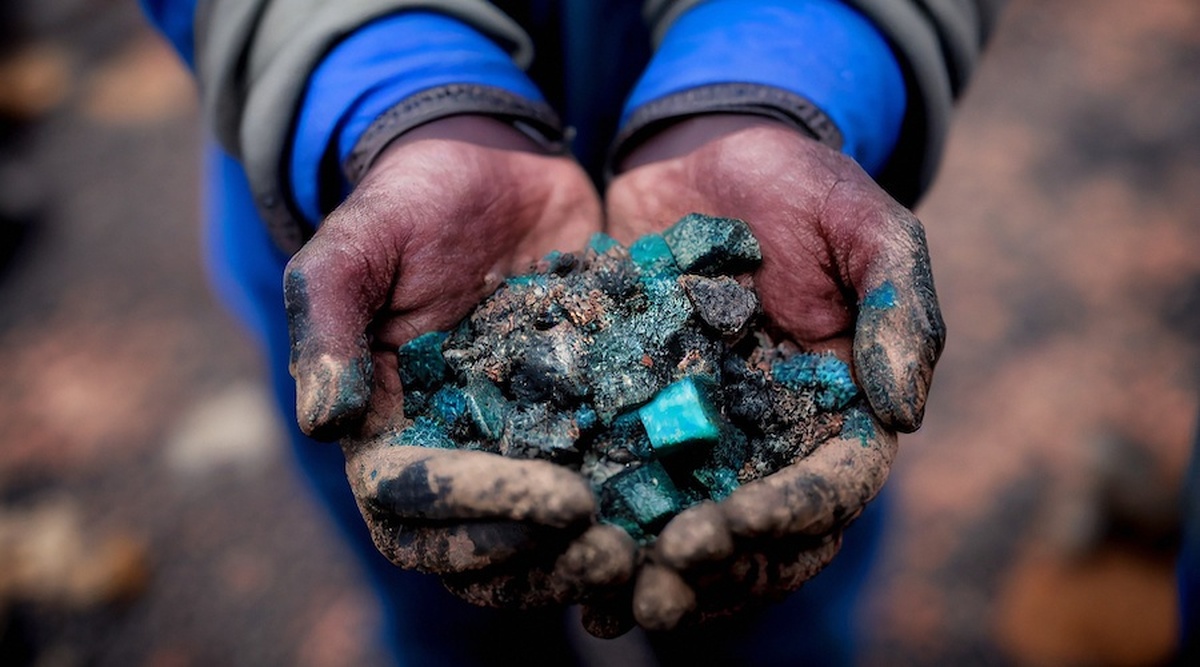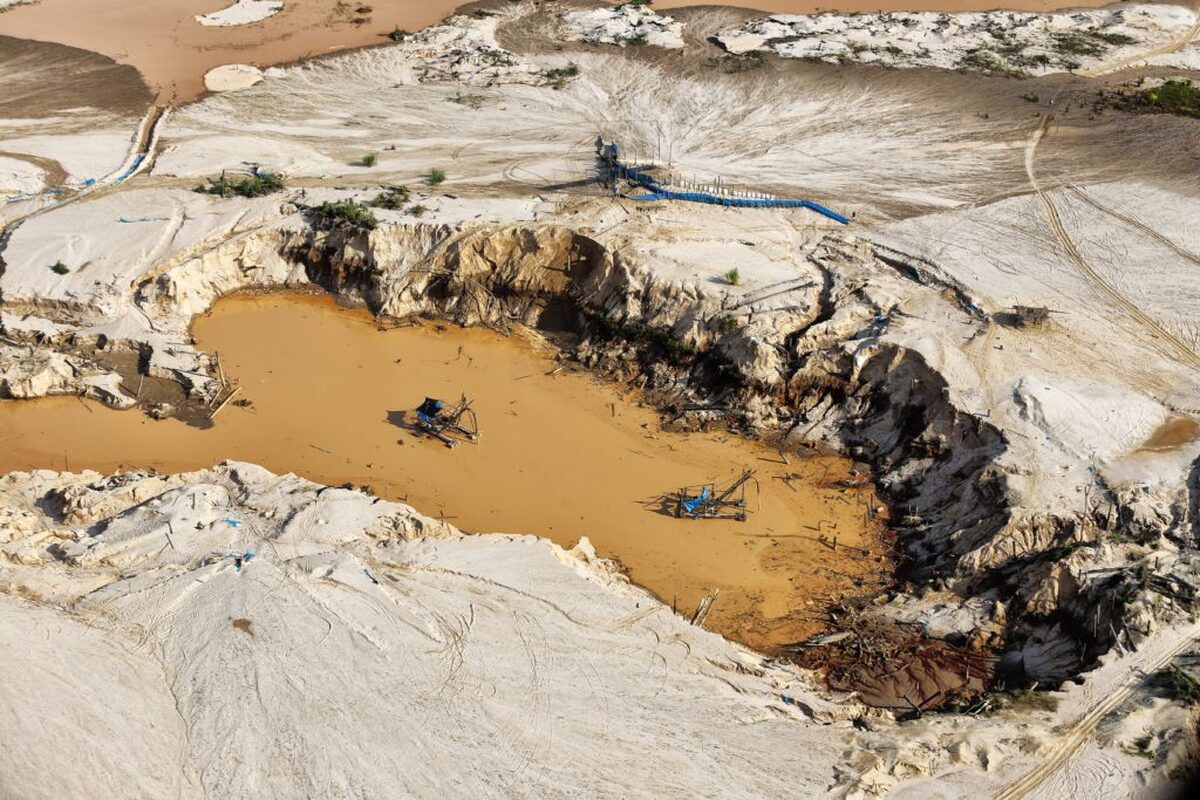
Why the cobalt market needs Congo’s “illegal” miners

The death last month of 43 artisan miners at the Kamoto Copper Company KOV concession in the Democratic Republic of Congo has refocused attention on the human cost of producing what is a key input into electric vehicle (EV) batteries.
The KOV concession is majority-owned by a subsidiary of trading and mining group Glencore.
The official response to the incident — sending the army to clear around 20,000 “illegal” miners from the area around the mine — merely underlines the problematic nature of the world’s dependence on Congo for its supply of cobalt.
The country accounted for around 64% of global mined production last year, according to the United States Geological Survey (USGS).
The latest incidents will do nothing to reassure automotive companies about the future stability of sustainable supply and will incentivise them further to try and reduce the amount of cobalt in EV batteries.
However, for now they’re stuck with the stuff since nickel-manganese-cobalt chemistry remains the bedrock of passenger vehicle batteries, albeit with varying composition ratios.
And that means they’re stuck with the Congo’s artisanal miners, who collectively represent the cobalt market’s swing capacity.
Swing producers
So-called swing producers are those operators that enter production during periods of high prices and depart when prices are low.
In many industrial metal markets swing capacity comes from the small-scale mine sector in China or scrap, which is notoriously price sensitive.
In the case of cobalt, swing capacity comes from the hundreds of thousands of artisanal miners operating in the Congolese copper-cobalt belt.
Such production was low during the 2010-2016 period because of depressed pricing, both in terms of products and the payables received by miners for their ore, according to research house CRU. (“Artisanal miners will balance the cobalt market”, Oct. 1, 2018).
However, prices exploded over the course of 2017 and 2018 on a combination of stuttering official-sector supply, rising demand from the battery sector and stock building along the supply chain.
CRU estimates that “average artisanal trader netbacks” surged 150% to $18 per lb between 2016 and 2017 with production unsurprisingly booming from 6,500 tonnes to over 19,000 tonnes.
It’s inevitably only an estimate, given the difficulties of tracking the ways artisanal product seeps into the official supply chain.
But if roughly correct, it would mean that artisanal mining in the Congo was the second largest source of global mine supply after Congo’s official sector in 2017. The next largest producer that year was Russia with output of around 6,000 tonnes, according to the USGS.
Boom and bust
Artisanal production helped mitigate a shortfall in global official-sector supply over the middle of this decade and played a part in the price bust that has followed the 2017-2018 boom.
The price of cobalt metal traded on the London Metal Exchange surged to a March 2018 peak of $95,250 per tonne from around $33,000 at the start of 2016.
Since those heady days cobalt has crashed and burned as production, both official-sector and artisanal, has risen and speculative inventory has been unwound. The price is currently at $27,050.
That alone is expected to squeeze out much of Congo’s swing artisanal supply, limiting the market shift into surplus.
Analysts at Citi forecast the market to remain in surplus over 2019-2022 to the tune of between 4,000 and 14,000 tonnes per year. (“Cobalt 2019-2025 Outlook”, Dec. 4, 2018)
“However post 2022 with mine supply growth slowing, cobalt demand from EVs rising rapidly, and work in progress inventories rising notably, we expect the balances to shift into significant deficit, and prices to rise back to $80,000 per tonne and potentially higher,” Citi says.
At which stage Congo’s swing artisanal production can be expected to kick back in.
Indeed, the market will need the extra supply if it is to avoid more extreme price turbulence, particularly given that the current low prices are causing push-back at non-Congo projects.
The question is whether the artisanal mining sector can be integrated into the official sector or remains an “illegal” wild card.
“Illegals”
The Congo already formally recognises artisanal mining and in theory at least regulates it via the Service for Assistance and Supervision of Artisanal and Small-Scale Mining (SAEMAPE).
“Many legal provisions have however never been fully implemented, which makes it hard to operate legally,” according to IPIS, an independent research institute which has visited and catalogued multiple artisanal operations in the country.
Artisanal miners often prefer not to register for official status, citing higher taxes, the administrative burden and the simple fact that officially sanctioned franchises often contain lower-quality ore, IPIS notes.
Such are the “illegal” 2,000 or so miners that Glencore estimates trespass onto its KOV property on a regular basis, engaging in the sort of high-danger operations that resulted in last month’s fatal tunnel collapse.
For a fast-evolving battery industry that is looking for socially responsible supplies of cobalt, this is evidently a major problem.
A possible solution is a project being tried and led by another cobalt producer, Chemaf, in cooperation with Trafigura, its marketing agent.
Chemaf has appointed a single artisanal mining contractor to develop its Mutoshi mine, initially manually with potential mechanisation down the road. The contractor washes and prepares the ore, which enhances both purity and pricing, before delivering it to a single Chemaf-operated buying station.
The whole operation is supervised by both SAEMAPE and PACT, a non-government organisation that is active in artisanal mining around the world, with Trafigura maintaining a quarterly inspection regime.
In theory every one wins.
The miners work under Western health and safety rules and have a guaranteed single buyer for their output. Chemaf gets additional production and runs a reduced risk of “illegals” moving onto the concession.
The government gets a transparent tax take. And Chemaf and Trafigura’s customers get their responsibly sourced metal without the risk of “contamination” from “illegal” production.
The Mutoshi experiment represents a very different operating model for mining companies, which have tended to see their engagement with the host community in more compartmentalised ways.
It may be time for a collective rethink by other official sector operators in the Congo and by the government itself.
Because using troops to disperse “illegal” miners in the wake of a mass-fatality accident is surely not the way to handle such an important component of the EV battery supply chain.



Trump weighs using $2 billion in CHIPS Act funding for critical minerals

Codelco cuts 2025 copper forecast after El Teniente mine collapse

Electra converts debt, launches $30M raise to jumpstart stalled cobalt refinery

Barrick’s Reko Diq in line for $410M ADB backing

Abcourt readies Sleeping Giant mill to pour first gold since 2014

Nevada army depot to serve as base for first US strategic minerals stockpile

SQM boosts lithium supply plans as prices flick higher

Viridis unveils 200Mt initial reserve for Brazil rare earth project

Tailings could meet much of US critical mineral demand – study

Kyrgyzstan kicks off underground gold mining at Kumtor

Kyrgyzstan kicks off underground gold mining at Kumtor

KoBold Metals granted lithium exploration rights in Congo

Freeport Indonesia to wrap up Gresik plant repairs by early September

Energy Fuels soars on Vulcan Elements partnership

Northern Dynasty sticks to proposal in battle to lift Pebble mine veto

Giustra-backed mining firm teams up with informal miners in Colombia

Critical Metals signs agreement to supply rare earth to US government-funded facility

China extends rare earth controls to imported material

Galan Lithium proceeds with $13M financing for Argentina project

Kyrgyzstan kicks off underground gold mining at Kumtor

Freeport Indonesia to wrap up Gresik plant repairs by early September

Energy Fuels soars on Vulcan Elements partnership

Northern Dynasty sticks to proposal in battle to lift Pebble mine veto

Giustra-backed mining firm teams up with informal miners in Colombia

Critical Metals signs agreement to supply rare earth to US government-funded facility

China extends rare earth controls to imported material

Galan Lithium proceeds with $13M financing for Argentina project

Silver price touches $39 as market weighs rate cut outlook



















